There are so many techniques that can be used to give a piece of furniture that “wow” factor. From distressing, to stenciling to transfers, a furniture artist has many tools at their disposal. The most frequent question I get, however, centers around obtaining an antiqued look. There are three ways to achieve that look, wax, glaze, or stain. This leads to the big question, “Which one is best?”
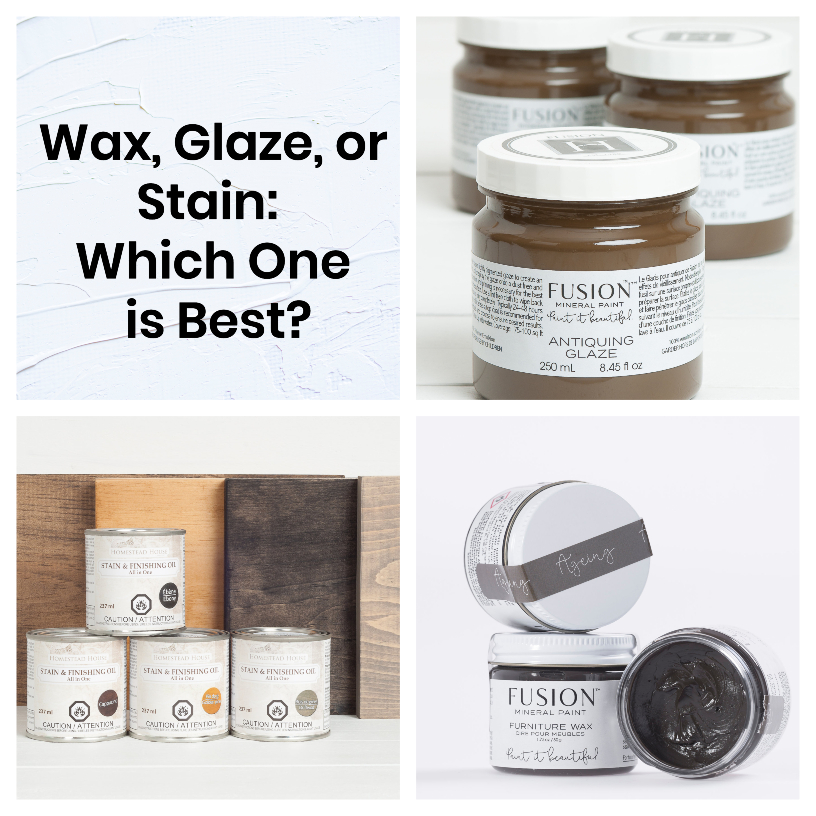
So let’s talk a minute about the three options and when and why you’d want to use each one. I’m going to start with WAX. Wax is an oil based product. It’s best applied with a brush and clean up is with mineral spirits. When I used to paint with chalk type paints, I would have to seal with clear wax and then could apply dark wax for the antique look. One of the BIG reasons I switched to Fusion Mineral Paint is that it is self sealing and I don’t have to wax it! I can, however, use dark wax as an antiquing medium and don’t have to apply a clear wax first.
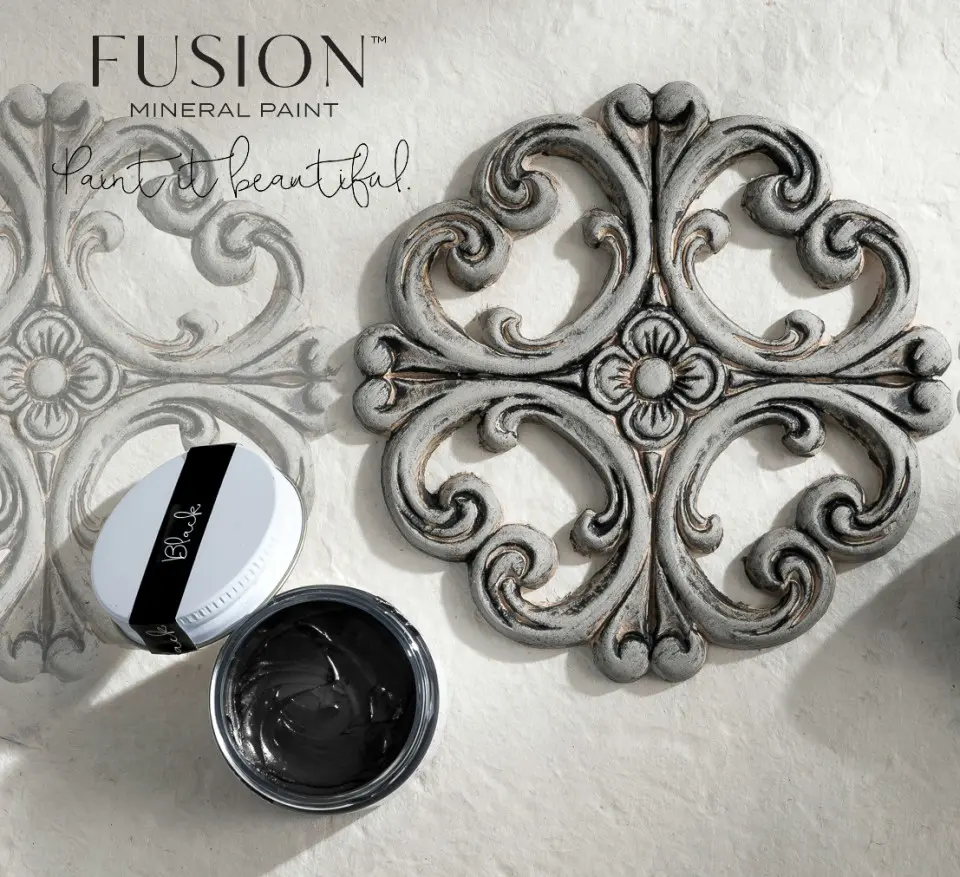
Wax has been around for years and Fusion’s wax is my favorite. It is low odor and is like whipped butter – so easy to use. But I don’t use it often. It’s not highly durable and doesn’t provide a waterproof surface so I’ll only use it on the sides or decorative accents of a piece. This desk has Espresso Wax applied to the Mustard paint, but the top is stained to ensure great durability.
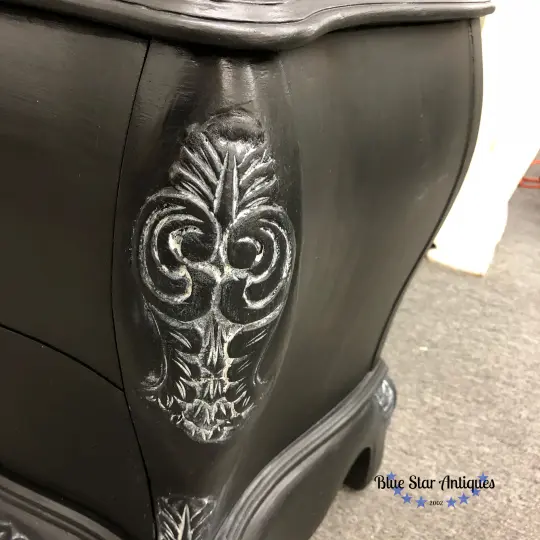
Coal Black with Liming Wax
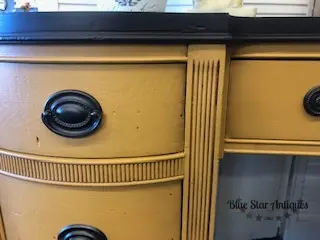
Mustard with Espresso Wax
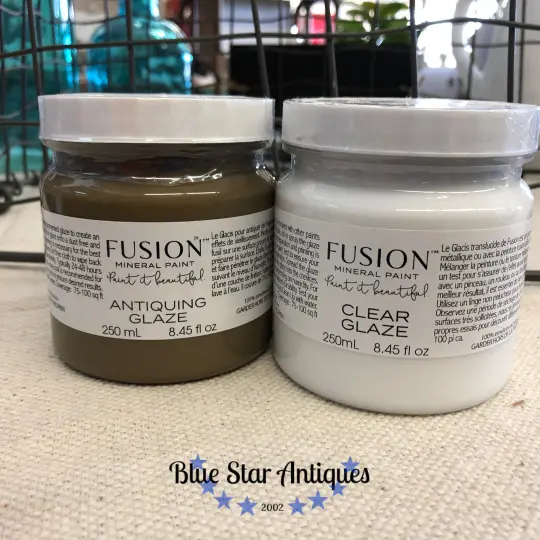
Fusion’s glaze is the easiest I’ve ever used, but it’s not my favorite antiquing medium for one reason. Glaze is water based and needs to be sealed to prevent it from reactivating if it gets wet. Tough Coat is the most likely sealer for that purpose. I’ve told you before that I’m a lazy painter, so adding this extra step and product makes it drop in popularity for me. I use it on pieces that I don’t worry about the glaze reactivating, like this small table.
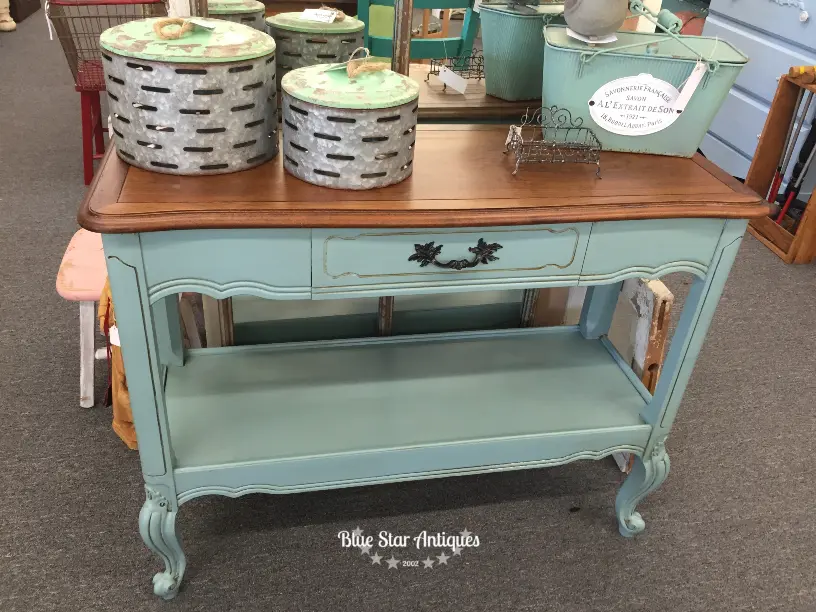
Heirloom with Antiquing Glaze
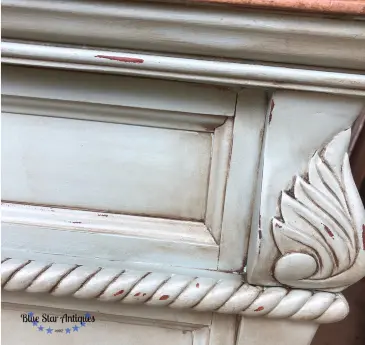
Heirloom with Cappuccino Stain and Finishing OIl
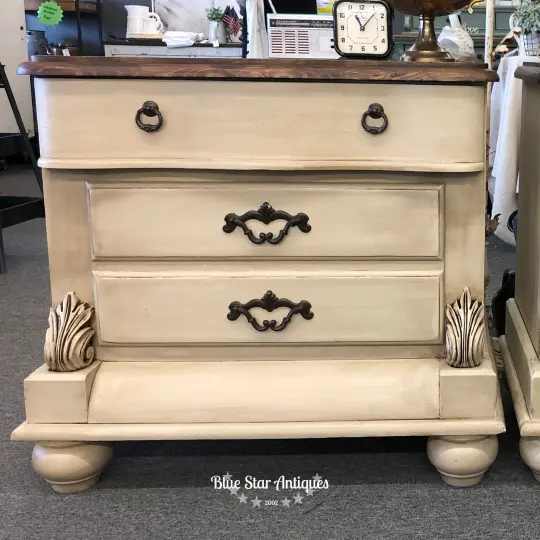
Champlain with Cappuccino Stain and Finishing Oil
Here are the colors that the Fusion waxes come in:
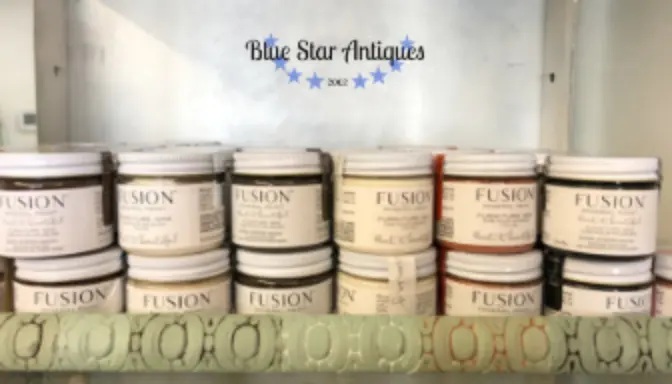
Aging, Pearl, Espresso, Liming, Copper, Black
Fusion’s glaze comes in two colors, Clear and Antiquing. The great thing about the clear glaze is that you can customize any color of glaze you want by adding some paint to it. I like 4 parts glaze to 1 part paint. Take a look at this beauty with Copper Glaze, a mix of Clear Glaze and Copper Metallic paint.
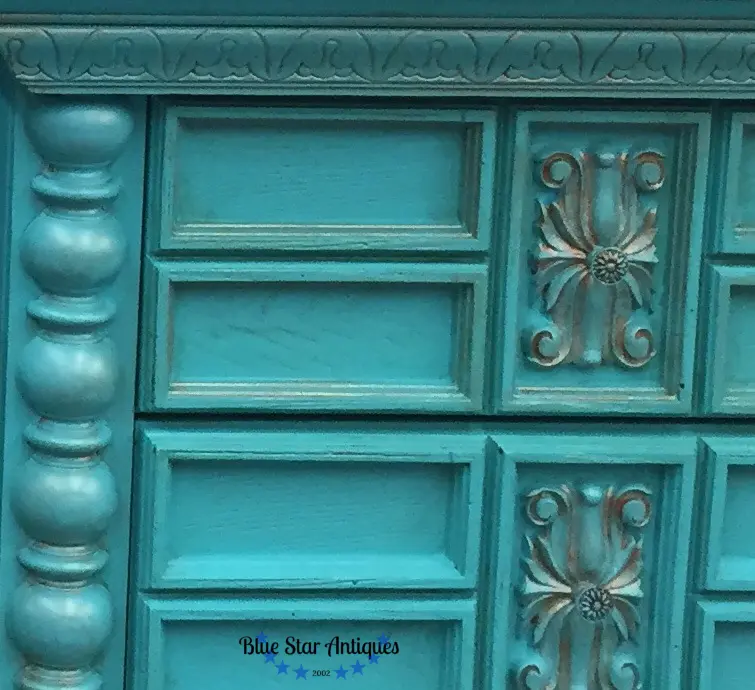
And here are the six colors of the Stain and Finishing Oil.
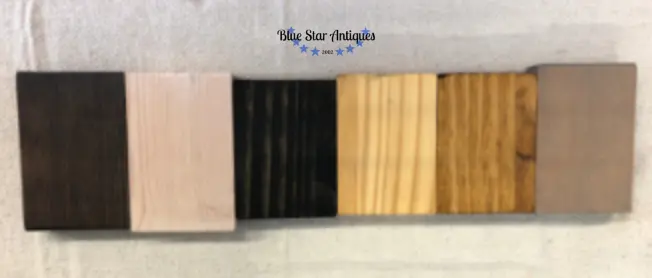
Cappuccino, White, Ebony, Natural, Golden Pine, Driftwood
So here’s a quick chart to help you decide which product is right for you and your project. Hopefully it helps you get the look you want!
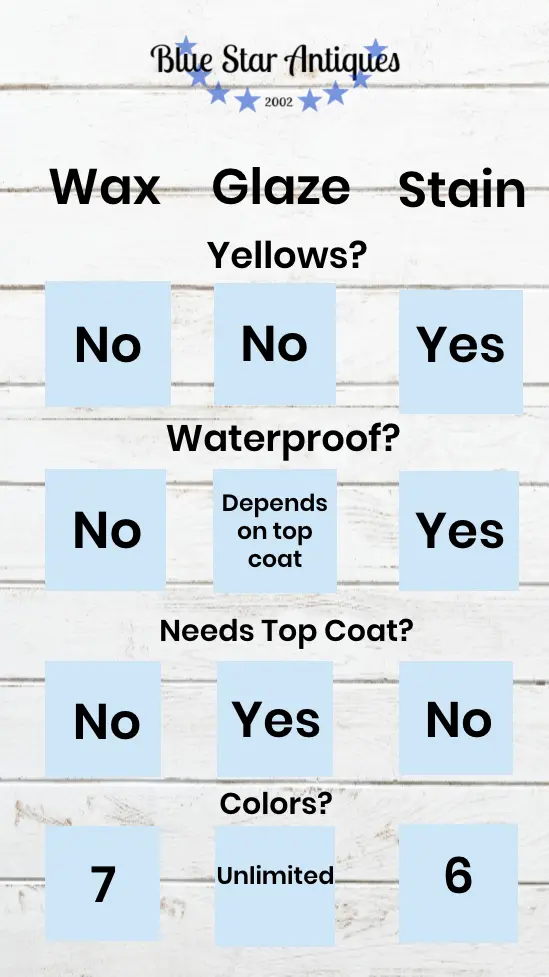
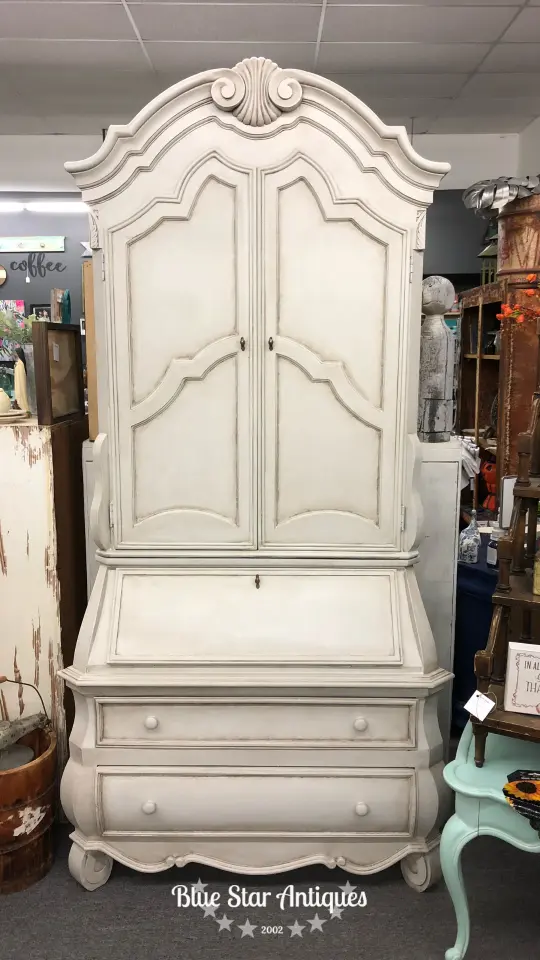
Lamp White with Driftwood Stain and Finishing Oil

So I guess this big beautiful piece shown here in Lamp White with Driftwood SFO is going to yellow eventually?
It showed no evidence of yellowing after two months and likely won’t show since the stain has gray pigments.
Wow this is beautiful. Would this be durable enough to do on my kitchen cupboards?
Yes! The SFO is a great topcoat for cabinets!
I’m doing a kitchen table and chairs in the lamp white with the driftwood SFO over it. I haven’t started the SFO yet. I love the armoire you did on this page in the same. My question is……………did you completely coat the armoire with the driftwood SFO? Or just the crevices and such? Please let me know. Thanks
!
Hey Brenda! To the best of my recollection, I used a sponge brush to dab the stain into the crevices and then dabbed it out and softer with a cloth. Hope that helps!
With SFO on a tabletop will you still have to guard against water rings?
Water rings are caused when moisture gets trapped in the finish. It happens easily with a wax finish since wax isn’t waterproof. SFO is designed for floors so as long as you don’t leave water sitting for days and wipe it down after use, it’s great!
What works best over darker colors like midnight blue? I’m wanting to give it a weathered/worn look… different from distressing. I tried black wax and it didn’t show up. Thanks for all the great resources!
I would try Driftwood Stain and Finishing Oil. Brush on a bit and then wipe off am much as you want. It’s a brownish gray and I think it would yeild a weathered look. You’ll need to take the wax off first. Use mineral spirits. If the Driftwood is darker or not the look you’re going for, it can be removed with mineral spirits as long as it’s wet.